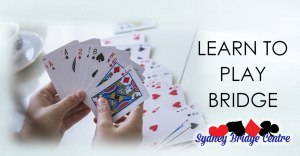City and Canada Bay – Thursday Morning 5th June 2025.

So often in competitive hands, one side has hearts and the other has spades. The side with spades of course has an advantage because they can outbid the other side at the same level. That, and the vulnerability, then has a big impact on how high each side can bid. Board 22 last week was a classic example.
The normal start to the auction will be P P 1♥ 1♠. Then it’s East with the first decision to make. He is about as good as he can be for his original pass and with 10 points he may well want to show an invitational raise of hearts. On the other hand, he has a lot of losers and his side is vulnerable so he might prefer a more conservative 2♥. Which he chooses may change the direction of the whole hand.
If East bids 2♥ then South will probably stretch to raise to 2♠. Even if East West then bid to 3♥, that will surely encourage North to compete onto 3♠. If, however, East bids higher immediately (either with a 3♥ bid or a “cue raise” of 2♠ to show a stronger raise to 3♥) that may shut South out of the auction. It’s now much riskier for North to compete further as he doesn’t know partner has any support for his suit (South could consider doubling a 2♠ bid to show some support but he may well choose not to – partly because he has such a bad hand, partly because he won’t want to suggest his partner lead away from any honours in the suit).
North South want to play 3♠ because it could make but, even if it doesn’t, the fact they are not vulnerable means 1 off (or 2 off undoubled) will score less than the -140 they would probably concede defending 3♥. On the other hand East West don’t want to push onto 4♥ because they are vulnerable and will most likely score at least -100 when they could have been getting a plus score from 3♠ (in fact they might score -200 which would be disastrous – see advanced section for more on that).
As is often the case with hands like this the traveller was a mix of East West playing hearts and North South playing spades – some making, some going off. North South scores ranged from +140 to -300 and East West from +170 to -100.
The range of scores arise because the play and defence are by no means clear on this board either. Let’s start with West playing in hearts. In theory it should make 9 tricks. The defence should score 1 spade, 1 diamond and 2 clubs. As soon as declarer reaches dummy he can run ♥10 and draw trumps to score 5 hearts and he will then also score 1 spade, 2 diamonds and the ♣K. But it’s not as simple as that. North doesn’t have a pleasant lead and it’s quite possible he will give something away. If he tries a spade declarer can run that to his ♠Q which loses the defence’s spade trick. A club would work OK but leading from a holding of ♣AJx is going to lose far more often than it gains. A trump turns out to be safe. But a perfectly reasonable shot is ♦A and another – perhaps hoping to score a diamond ruff (partner might hold the ♦K or the ♥A). As it turns out ♦A and another should also lead to 10 tricks which will score very well for East West – see advanced section for how to play it.
What about North playing in spades instead? East will probably lead a low heart (the ♥10 works out better on this hand but the standard lead is a lower one from a 3 card holding). After West wins ♥J he can’t play another heart so will switch – most likely to a club (♦Q is possible but won’t look attractive with ♦109xx in dummy). When East gets in with ♣K, he will continue with hearts and the defence will play 2 more rounds forcing declarer to ruff. Now declarer can reach South with ♣Q to lead a trump and the key to how many tricks he makes will be to guess which spade to play! Guessing right and playing ♠J will mean declarer loses 1 spade, 2 hearts, 1 diamond and 1 club – so 8 tricks in all. Guessing wrong and playing ♠K will mean 7 tricks. How would you play and why? See advanced section for thoughts on the answer (and also on when the difference between 7 and 8 tricks will be critical).
Key points to note
Spades can outbid hearts at the same level so the side holding spades tends to have an advantage in competitive part-score hands.
The vulnerability is very important when competing – the thing you absolutely want to avoid is scoring -200 (2 off vulnerable or 1 off doubled).
Even if you do sometime compete further than you should, you may get away with it as the defence frequently give tricks away – particularly if they have a difficult lead.
Sometimes as declarer you can deliberately play on a suit you don’t care about to try and “discover” where the honours in that suit are. That knowledge may then help you decide how to play another suit.
More advanced
I said East West scoring -200 would be disastrous – but why? Because on a partscore hand, the most the other side can usually score is less than that (to score 200 they would need to make 11 tricks in a major or no-trumps and on those hands they should be in game anyway). The difference between -100 and -200 on a partscore hand playing matchpoints is absolutely enormous – think of all the common scores that fall in between (-110, -120, -130, -140, -150, -170). It’s why you have to be very careful competing when vulnerable – going 2 off, or getting doubled for 1 off will get you the dreaded -200 and a virtual bottom!
How could East make 10 tricks after ♦A and another? Win the ♦Q in hand, cross to ♠A and draw trumps with the aid of the finesse (you need to run ♥10 from dummy because of the shortage of entries – then you can repeat the finesse if South doesn’t cover). Now cash ♦J then lead a club. North can win ♣A and cash ♠K but will have to allow you to reach dummy with ♣K and you can then discard your 3rd club on ♦K. You just lose ♦A, ♠K and ♣A.
If North is playing spades, the key decision is how to play the spades. Assuming the contract is 3♠ the difference between 7 and 8 tricks probably won’t matter much when not doubled (because both -100 and -50 are better scores than the -140 North South would have conceded defending 3♥). But if 3♠ was doubled it becomes crucial – now the difference is between -300 (disastrous) and -100 (good).
So how to determine how to play the spades? The initial instinct is going to be to guess to play ♠K and assume the ♠A is with West, the hand that opened the bidding. That doesn’t work here. But let’s look a bit deeper. It may be possible to get it right depending on the auction and play.
After a heart to the ♥J, a club to the ♣K and 2 more rounds of hearts it’s clear where all the honours in those suits are. But that’s still not enough information to work the spades out. Something declarer might try first though is to play ♦A and another himself! It’s known as a “discovery play”. In diamonds declarer always has 1 winner and 1 loser. But if he can find out how the diamond honours lie from the way the defence play that suit that may give him a further clue about how to play the critical spade suit. Here East might rise ♦K (which would give away the whole suit), or he might duck to West who would win ♦J (now it’s not so clear!) The overall principle is to try and find out as much as you can before having to make a critical decision in spades (yes there is some risk in playing diamonds as the defence could perhaps then set up a club ruff but that’s fairly low).
The auction is also relevant. For example if East did show a good raise of hearts in the auction then he has to have some points as well. With only ♣K and with nothing in hearts, he would need quite a few points in spades and diamonds to make up a limit raise (and if his diamonds were as good as ♦KQJ he would surely have led one?) So he probably has at best a broken diamond honour holding. That now points to him having ♠A.
As you get more advanced at bridge it’s these sort of deductions which makes it such a fascinating game! And it’s why the “good” players tend to get these “guesses” right more often than you might expect – because sometimes they have worked out the most likely layout and it’s actually no longer a guess!
Julian Foster (many times NSW representative) ♣♦♥♠



